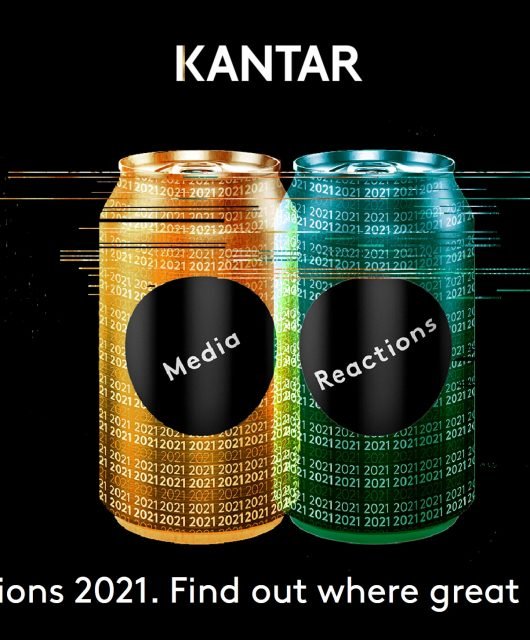By: Shant Oknayan, Regional General Manager, TikTok For Business – Eastern Europe, Middle East & Africa, Türkiye and Pakistan

In today’s world, there is no shortage of technologies or innovations. There is, however, a disparity between the demands and expectations of consumers and the rate at which we, as businesses, are solving for them. And, in the discussion about digital transformation, we seem to have gotten carried away with the digital part of the equation.
We debate technologies or constructs like cryptocurrency, blockchain and AI – and while these are all very exciting conversations to have, when used as a starting point, they cloud our focus, because they are essentially tools or enablers and only one part of the transformation equation.
To transform, we need to first listen. So I always like to say: there is no digital transformation, there is only transformation. And in that light, I’d like to first ask instead: Who are we solving for and what are their needs and demands today?
Consumers: Welcoming the new voice of prosumers
To answer that question, we need to chart the transformation of the digital landscape from the onset of the World Wide Web, to understand how we went from passive consumers of content to prosumers, who proactively participate and engage in the conversation.
In the first implementation of Web 1.0 or the Information Web, we were limited to reading information presented to us by a few publishers and portals – making us consumers in a highly centralized world.
With Web 2.0 or the Social Web, we were able to upload our thoughts and network with people. In other words, we started thinking about what we could contribute back. But innovation and power were still mainly driven and directed by businesses, and thus, so was transformation. In this version of the web, we became contributors to digital culture with only slightly more control over the ecosystem we operated in.
Today, we’re approaching a new advent of cyberspace – Web 3.0, or the Semantic Web – which comes with a host of new demands in the decentralization of innovation and transformation. It is a cyberspace increasingly owned and controlled by people and communities, meaning, a higher power no longer drives or supplies transformation. In our current, highly decentralized world, people have evolved from consumers to prosumers who actively participate in creating and transforming a world that is relevant to them and to their needs.
Content: The content graph
With this shift, the way people consume content has also transformed significantly over the last 20 years. Prior to 2000, content consumers were exposed to was determined by the medium, whether that be billboards, TV or radio. From 2000-2010, content consumption was dictated by the knowledge graph, a model wherein users receive content based on queries they input – this can be seen in its purest iteration in the form of search engines.
We then moved to the social graph in 2010-2020, a paradigm wherein consumers saw content based on who they followed. Today, content dissemination has evolved back into a content graph, which serves consumers content based on their interests first and foremost. This is a drastic shift from the previous passive form of consumption, putting users back in control of their consumption by delivering content that is relevant to them, based on their preferences and habits.
Communities: Digital campfires
The content graph drove people to come together into online communities based on their shared interests where they could share stories and converse together. This phenomenon was dubbed the digital campfire, and you can see it in action by looking up hashtags like #FoodTok, #SmallBusinessTok or #MomTok. In fact, hashtags ending in “Tok” have seen a 70% increase in monthly video views in the period from August 2020 to August 2021, according to internal data.
People don’t want crowded and pre-curated feeds – they want to gather around shared interests and create unique experiences, relevant only to them, so that no two feeds look exactly the same. That is why we have observed the meteoric rise of community-based platforms over the last two years.
Creators: The evolution of influence
Content creators were born from these communities, gaining real influence based on their expertise, not their number of followers. For years, brands have idealized the ‘Pyramid of Influence,’ working with one group to influence the many. But fame is not as linear as this in real life; it’s more complex and interconnected. Interest-based platforms have flipped the model, decentralizing it and making it more inclusive, and thus forming clusters of influence. Users now come together based on content or a shared interest and not any one elevated individual.
These interest-based communities are more influential than a following; while followers are people who passively follow an influencer’s lead, a community is a group of ambassadors who engage with the creator and with one another.
Commerce: Looking ahead – transformation of commerce
In light of these shifts in digital behavior, it follows that online commerce will also transform – and we have already seen examples of this.
One example is live commerce, wherein livestreaming hosts present products while interacting with the community in real-time. Live commerce has taken China by storm, with all major Chinese e-commerce platforms incorporating this function, and top streamers selling hundreds of millions of dollars worth of products every year. This phenomenon is now expanding globally.
We have also seen the rise of native commerce, wherein consumers enjoy a seamless shopping experience from start to finish on an e-commerce website or a brand’s dedicated online store or app. TikTok has brought this to life with Shopify integrations; an example of a brand that leveraged this is Melaa Cosmetics, wherein Melaa’s product catalog was seamlessly integrated on its TikTok feed to create a digital storefront.
We are also seeing the gamification of commerce whereby brands are no longer having a one way communication with their consumers but instead opting for a 2-way interaction with them, rewarding an action with a reaction. An example at TikTok was with the toothpaste brand Colgate to create an in-app reward page where users can complete tasks to collect points and unlock a coupon or QR code, which can then be redeemed digitally or in-store.
Conversational commerce has also gained traction, leveraging chatting platforms to create a direct one-to-one conversation between the brand and the consumer, wherein users can purchase products directly from the messaging app.
But perhaps the most far-reaching and influential evolution of commerce has been the rise of community commerce, which encourages audiences to create entertaining, compelling content that just so happens to feature brands. In essence, it’s the digitization of word-of-mouth marketing, and it empowers brands to form genuine connections with people in a way that drives awareness, favorability, and sales. It’s an exciting kind of marketing that prosumers, themselves, have designed. And it’s a whole new way for brands to show up—and sell out products overnight.
In conclusion, the transformation of these 5 C’s – consumers, content, communities, creators, and commerce – will shape the digital economy in 2023. By challenging the borders drawn around traditional digital content, and empowering creators and prosumers to drive the change, we will achieve a people-led digital transformation, propelled by borderless communities that will shape the future of businesses, commerce, experiences, culture and beyond.





